Campus
- Downtown Toronto (St. George)
Fields of Study
- Biological Chemistry
- Organic Chemistry
Areas of Interest
Our research programme is in the area of organic synthesis with an emphasis on the design of reactions which are highly stereo- and enantioselective. The central goal of our studies is to develop new methods and efficient strategies for the synthesis of bioactive compounds. We focus on carbon-carbon bond forming processes which efficiently create multiple stereocentres. Metal catalyzed reactions are of particular interest due to the ability to control reactivity by changing the metal and its ligands. Our work spans the fields of organic synthesis, asymmetric catalysis and organometallic chemistry.
For example, we discovered that bicyclic compounds containing bridging oxygen or nitrogen atoms can be fragmented by nucleophilic ring opening while simultaneously creating up to five stereocentres in one step. We have developed several enantioselective variants of this reaction using nickel catalysts and hydridic nucleophiles, palladium catalysts and carbanionic nucleophiles and rhodium catalysts with heteroatom nucleophiles. This methodology has been used to prepare useful therapeutic agents such as the clinically important anti-depressant agent Sertraline and other templates that are known to show diverse bioactivity. We have ongoing syntheses of cholesterol-lowering agents, anti-obesity agents, HIV protease inhibitors and molecules that form ion-channels using this methodology.
Our studies on ring opening have expanded to encompass ring opening of epoxides and aziridines catalyzed by rhodium or Lewis acids. We recently discovered amphoteric character associated with vinyloxiranes in the presence of scandium triflate or boron trifluoride. Rearrangement to an electrophilic or nucleophilic species has been observed and the generality of this transformation is the subject of ongoing studies.
We have several different research programs in the general area of ring synthesis as it applies to natural product chemistry. One example is an intramolecular ring closure-ring opening in order to generate polycyclic compounds. This methodology is currently being applied to the synthesis of PKC activators of potential importance in cancer therapy. We have also developed a new palladium catalyzed method for benzannulation reactions in which two new carbon-carbon bonds are formed in one step. The scope of this reaction as it relates to heterocycle synthesis and polycyclic synthesis is currently under investigation. Our studies in the synthesis of five and six-membered rings by metal-catalyzed cycloaddition chemistry have led to insights into the mechanism of cycloadditions of methylenecyclopropanes (MCP's). We developed samarium promoted reactions of allenes as an efficient route to MCP's and examined them as substrates in palladium, nickel and magnesium promoted reactions.
We have a long-standing interest in metal-catalyzed hydrometallation processes. We typically form a new metal-carbon bond which can undergo subsequent coupling reactions. In some cases we form a ring while carrying out a hydrometalative-cyclization. Thus far our focus has been on hydroalumination and hydrostannation promoted by nickel and palladium. We have found novel catalysts and reactivity patterns in each case and are currently searching for enantioselective variants or cascade reactions to form multiple rings in a stereoselective fashion.
Students carrying out research in the group are trained to work in the fine chemical, pharmaceutical, agrochemical business while others have moved on to positions in universities around the world. Please see the group webpage for more details on the career paths.


